Introduction
Welcome to our blog post on “The Revolutionary Evolution: Exploring the Top 10 Metaverse Applications of All Time.” In this article, we will delve into the fascinating world of the metaverse and its ever-evolving applications. But first, let’s start with an introduction to the metaverse itself. The metaverse is a virtual reality space where users can interact with a computer-generated environment and other users in real-time. It is a concept that has gained immense popularity in recent years, with its potential applications reaching new heights. We will explore the revolutionary evolution of metaverse applications, from the early days to the present, and discuss the benefits, features, and potential applications of the top 10 metaverse applications of all time. So, without further ado, let’s dive in and explore the metaverse’s limitless possibilities.
Definition of metaverse:
The concept of the metaverse refers to a virtual reality space where individuals can engage in a variety of activities and interactions through immersive, computer-generated environments. It is an interconnected virtual universe that allows people to navigate, explore, and communicate within a digitally simulated environment. The term “metaverse” was initially coined in Neal Stephenson’s science fiction novel “Snow Crash,” which depicted a virtual reality space where users could access various experiences and connect with others. Today, the metaverse represents a vision for the future of the internet, encompassing a wide array of technologies, platforms, and applications that provide users with a seamless and immersive virtual experience.
Overview of the revolutionary evolution of metaverse applications:
The development and evolution of metaverse applications have taken significant strides in recent years, revolutionizing the way we interact with digital environments. Metaverse applications have gone beyond simply enhancing gaming experiences and have made their way into various industries, including entertainment, education, healthcare, and even business collaboration.
In the entertainment industry, metaverse applications have opened up possibilities for immersive storytelling and gaming experiences. With advanced graphics, haptic feedback, and augmented reality elements, users can now engage in virtual worlds that are almost indistinguishable from reality. Virtual concerts, interactive movie experiences, and virtual theme parks are just a few examples of how the metaverse has transformed entertainment.
In the field of education, metaverse applications are redefining traditional learning methods, offering students a more engaging and interactive approach to education. Virtual classrooms, where students can collaborate, explore virtual educational environments, and participate in interactive simulations, have become increasingly popular. This has not only enhanced the learning experience but has also opened up opportunities for remote education, enabling students from different parts of the world to connect and learn together.
Moreover, metaverse applications are making significant inroads into the healthcare industry. Virtual reality simulations and experiences are being utilized for therapies, training healthcare professionals, and even providing patients with immersive experiences that aid in pain management and mental well-being.
The business world is also embracing the potential of the metaverse. Remote work and collaboration tools have been given a new dimension with virtual office spaces, allowing geographically dispersed teams to meet, share ideas, and collaborate in a virtual environment. Companies are leveraging the metaverse to conduct virtual conferences, trade shows, and exhibitions, eliminating the need for physical presence while still facilitating networking and knowledge sharing.
In conclusion, the metaverse represents a revolutionary evolution in digital experiences, providing users with immersive and interactive environments that transcend traditional boundaries. Metaverse applications have transformed various industries, offering novel ways of entertainment, education, healthcare, and business collaboration. As technology continues to advance, the metaverse is expected to become an integral part of our daily lives, shaping the future of how we interact with the digital realm.

1. Decentraland
Decentraland is a groundbreaking virtual reality platform that offers users the opportunity to immerse themselves in a decentralized, user-owned virtual world. This platform enables users to create and explore 3D environments, interact with other participants, and develop various virtual assets leveraging blockchain technology. The benefits of Decentraland lie in its open and permissionless nature, allowing for user-driven content creation and ownership. With its decentralized architecture, users have full control over their virtual properties and assets, eliminating the risk of censorship and enabling the development of unique and authentic experiences. The potential applications for Decentraland are diverse and far-reaching, ranging from virtual gaming and entertainment experiences to virtual commerce, education, social interactions, and even real estate investment. As the metaverse continues to gain momentum, Decentraland stands at the forefront, offering a visionary platform with boundless possibilities for innovative and immersive experiences.

2. Meta (formerly Facebook)
Meta, formerly known as Facebook, stands as one of the foremost metaverse applications in the digital landscape. Undergoing a transformative rebranding, Meta has evolved from a social media platform to a visionary metaverse builder. The company’s vision extends beyond traditional boundaries, promising a digital realm where users can seamlessly interact, explore, and create across the virtual and physical worlds. Offering a wide spectrum of benefits and features, Meta empowers individuals and businesses alike with augmented and virtual reality technologies. From immersive social interactions to groundbreaking educational experiences, Meta unlocks an array of possibilities. Furthermore, the potential applications of Meta span various sectors, from gaming and entertainment to collaborative workspaces and telemedicine, all contributing to its status as a groundbreaking metaverse pioneer.
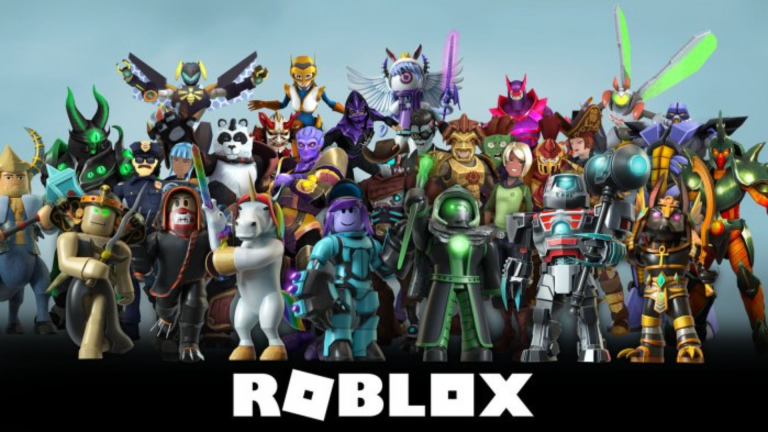
3. Roblox
Roblox ranks among the most prominent metaverse applications in the modern digital landscape. It serves as a versatile online platform that blends entertainment, creativity, and community interaction. Roblox allows users, known as “Robloxians,” to unleash their creativity by designing and developing their virtual worlds and games within the Roblox metaverse. The platform’s benefits and features encompass a vast array of user-generated content, fostering a vibrant ecosystem of games, experiences, and virtual items. What sets Roblox apart is its accessibility, enabling users of all ages and backgrounds to participate in this collaborative digital universe. Potential applications of Roblox span educational initiatives, where it has been used to teach programming and game development, as well as offering unique entertainment experiences, virtual concerts, and interactive storytelling. Roblox’s expansive and innovative approach makes it a trailblazing metaverse application with far-reaching implications for the future of online interaction and creativity.
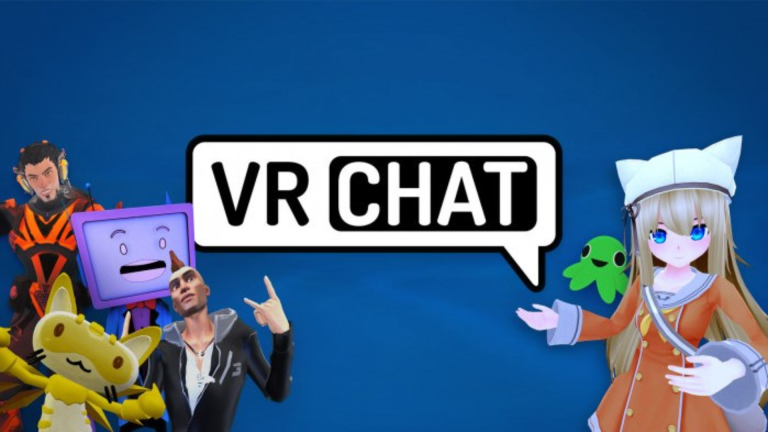
4. VRChat
VRChat stands out as a prominent metaverse application, offering a truly immersive and social virtual reality experience. At its core, VRChat serves as a digital playground where users can interact, socialize, and express themselves within a shared virtual world. One of its standout features is the ability to create custom avatars and environments, allowing for unparalleled personalization and creativity. Users can engage in real-time conversations using voice chat, making interactions feel incredibly lifelike. VRChat offers not only a platform for entertainment but also a unique space for communities to form, from casual hangouts to niche interest groups. Its potential applications extend to various domains, including education, where it can facilitate immersive learning experiences, and business, where it can support virtual meetings and events. VRChat exemplifies the power of metaverse technology to bring people together in entirely new ways, transcending geographical boundaries and redefining social interaction in the digital age.
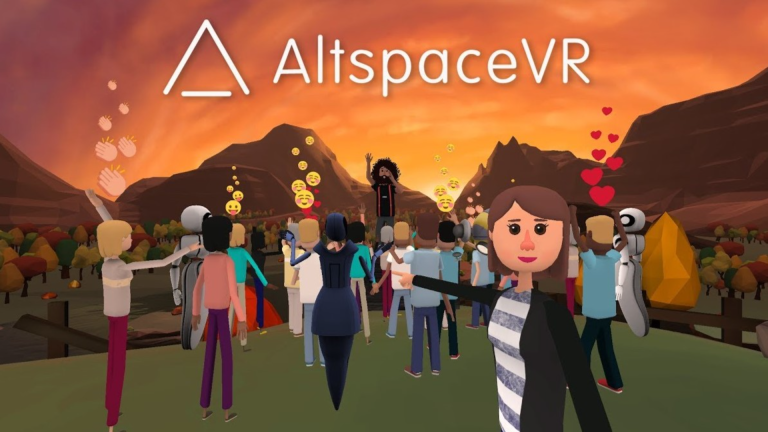
5. AltspaceVR
AltspaceVR stands as a noteworthy metaverse application, renowned for its immersive social experiences and virtual gatherings. It provides users with a versatile platform to connect and engage with others in a shared virtual space. AltspaceVR’s key features include the ability to host events, such as concerts, conferences, and meetups, in a three-dimensional digital environment, fostering a sense of presence that transcends physical distances. Users can create personalized avatars and interact using voice chat, making conversations feel remarkably lifelike. The platform’s potential applications extend beyond entertainment, with businesses using it for virtual team meetings, product launches, and training sessions. It also serves as a valuable tool in the realm of mental health, offering virtual support groups and therapy sessions. AltspaceVR exemplifies the growing significance of metaverse applications in connecting people, fostering meaningful interactions, and expanding the possibilities of digital collaboration and community-building.

6. Somnium Space
Somnium Space emerges as a prominent metaverse application, carving its niche in the virtual reality landscape. At its core, Somnium Space is a sprawling, decentralized metaverse where users can explore, socialize, create, and even own land and assets in a blockchain-based ecosystem. This unique ownership structure gives users a real stake in the digital world they help shape. With benefits and features ranging from user-generated content creation to immersive virtual events, Somnium Space provides a dynamic environment for creative expression and collaboration. Its potential applications are manifold, from artists showcasing their work in immersive galleries to businesses hosting virtual conferences and trade shows. Somnium Space exemplifies the concept of virtual ownership and decentralized ecosystems, paving the way for innovative applications of blockchain technology within the metaverse, while offering a vibrant and versatile platform for users to engage with one another in a shared digital realm.
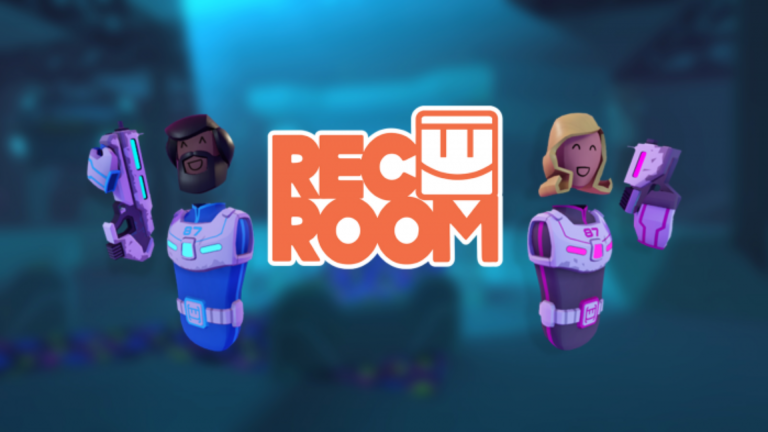
7. Rec Room
Rec Room stands as a standout metaverse application, renowned for its fusion of gaming, social interaction, and creative expression. This virtual playground offers users a dynamic and accessible space to connect with friends and strangers alike, engaging in various activities from playing games and creating custom content to attending live events and virtual parties. Its benefits and features include a wide array of user-generated content, such as user-designed games and rooms, providing an ever-evolving and diverse virtual landscape. The potential applications of Rec Room are multifaceted, encompassing not only gaming and entertainment but also educational experiences, virtual tourism, and team-building exercises for businesses. Rec Room’s unique blend of accessibility, user-generated content, and social interaction cements its position as a leading metaverse application, reshaping the way people come together in digital spaces for fun, learning, and collaboration.

8. Sansar
Sansar, an innovative metaverse application, has made a significant mark in the realm of virtual reality. This platform offers a versatile and immersive digital space where users can create, explore, and socialize within a vibrant virtual universe. Notably, Sansar’s benefits and features include its robust set of tools for content creation, enabling users to craft their 3D worlds, experiences, and virtual events. This unique platform has a wide range of potential applications, from hosting virtual concerts and art exhibitions to facilitating educational seminars and corporate meetings. Sansar’s emphasis on user-generated content and immersive social interactions showcases its potential to redefine how people engage in virtual spaces, collaborate, and share experiences, solidifying its place as a top-tier metaverse application that transcends traditional boundaries.
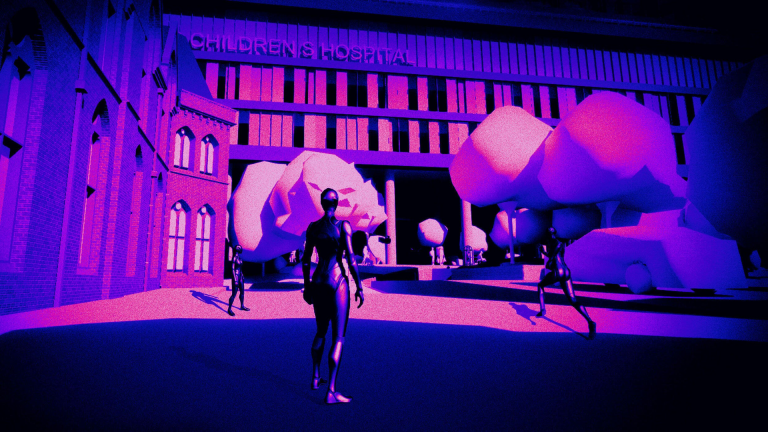
9. High Fidelity
High Fidelity emerges as a remarkable metaverse application, spearheading innovation in the realm of virtual reality. At its core, High Fidelity provides users with a highly immersive and interactive virtual space where they can socialize, collaborate, and explore. One of its standout features is its focus on spatial audio, which enhances the sense of presence and realism, making virtual interactions more lifelike. Users can create and customize their avatars, contribute to the development of virtual worlds, and even script their interactive experiences. The potential applications of High Fidelity span a wide spectrum, from enabling remote work and training scenarios to fostering virtual gatherings and events that mirror real-world interactions. High Fidelity’s commitment to pushing the boundaries of what’s possible in virtual spaces, particularly in terms of audio realism and user agency, positions it as a pioneering metaverse application with profound implications for the future of digital engagement and collaboration.

10. Spatial
Spatial, an innovative metaverse application, has made its mark as a transformative platform for virtual collaboration and interaction. At its core, Spatial reimagines the way people connect and collaborate in digital spaces. It leverages augmented and virtual reality technologies to create shared workspaces that transcend geographical boundaries, allowing users to meet, work, and interact as if they were physically present together. The benefits and features of Spatial are striking, offering real-time 3D spatial audio, lifelike avatars, and an array of tools for presentations, brainstorming, and collaborative projects. Its potential applications extend to diverse domains, from revolutionizing remote work by providing immersive virtual offices to enhancing education through interactive and engaging virtual classrooms. Spatial’s commitment to creating intuitive and productive virtual environments has positioned it as a top-tier metaverse application, reshaping how people collaborate and communicate in the digital age.


